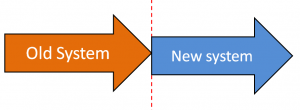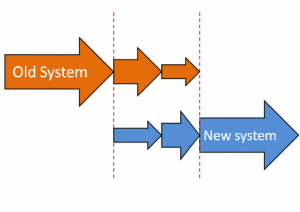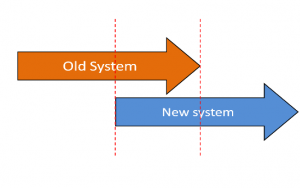Implementing new order management system is always exciting for any company regardless of its size. Even after implementing one of the most mature systems, roll-out strategy can be very challenging because of the number of systems it interacts with.
Though there is no clear answer because each organization has different business objectives, timelines and budget, but there certainly are some guidelines that can help choose the right strategy.
One of the most important step which organizations usually overlook is the success criteria. It should be clearly measurable and focused on the solution. There could be various success criteria for instance customer receiving the product and funds getting collected. To summarize there are certain criteria which are compulsory and there are others which are nice to have. Eventually, these criteria will help the organization decide whether the solution will be rolled out or not.
On a high level, here are some possible options:
- Big bang: in this option new system takes over on a given day. All the features of the new system are available to the user on the same day. Old system is off and all users can start using the new one.
 Image source: Wikipedia
Image source: Wikipedia
- Pros
- Users need to learn only one system. They don’t need to learn how to manage business process in two systems.
- Implementation period is short which means cost is low.
- Return on investment is quick.
- Cons
- The risk involved is very high.
- Efficiency can be reduced because of users trying to learn the new system.
Even after very long QA cycles, sometimes validating the solution in production before the actual go live can give the desired confidence to business and IT. Some organizations try a fixed number of orders in new system and then go back to the old one for regular processing. After doing this exercise multiple times, organizations feel comfortable with the big bang approach.
- Phased: this option provides users particular features in phases. For example: phase one will let users manage orders from one channel. Phase 2 will take care of another channel and so on. Phases can be defined using different strategies such as by region, by order channel, by product line, by customer type and so on. It is very important to define the success criteria so that solution can be rolled out to the future phases.

Image source: Wikipedia
- Pros
- No need to plan for user training because users can learn on the go.
- Less amount of risk is involved as compared to big bang.
- Cons
- Return on investment takes long time.
- Temporary connections between old and new system are needed.
- Parallel running: in this approach both systems run in parallel and perform all the actions. This approach gives users opportunity to compare the behaviors of old and new systems.

Image source: Wikipedia
- Pros
- Very less or no risk involved.
- Users can learn on the go.
- Cons
- Users are maintaining two systems so this is not the most efficient approach.
- This would require bigger operations team and two systems running in parallel is very expensive.
Some of the important factors that help an organization determine the best rollout strategy are number of systems involved and nature of business. Finally, each organization is different, so based on cost, time lines and amount of risk, what is best for it should be determined.
